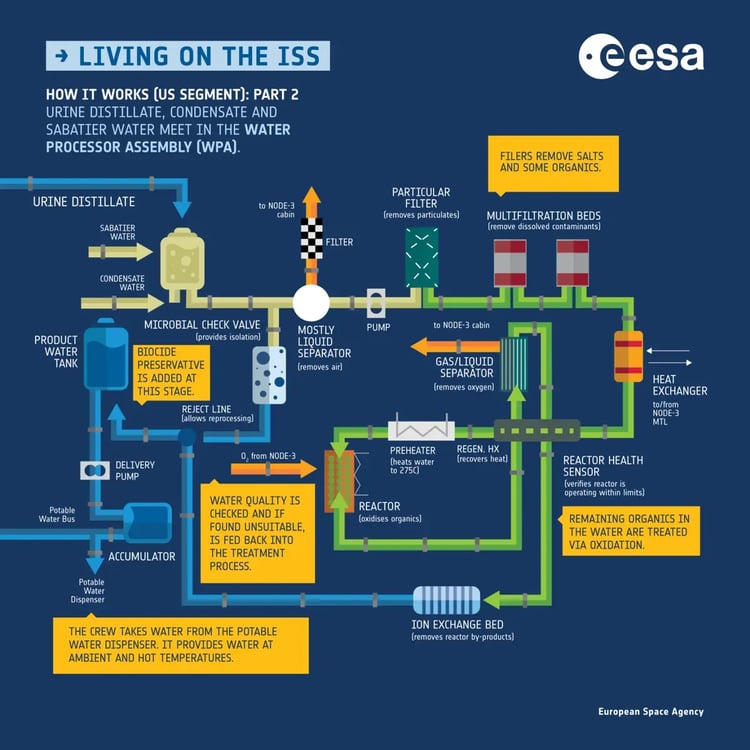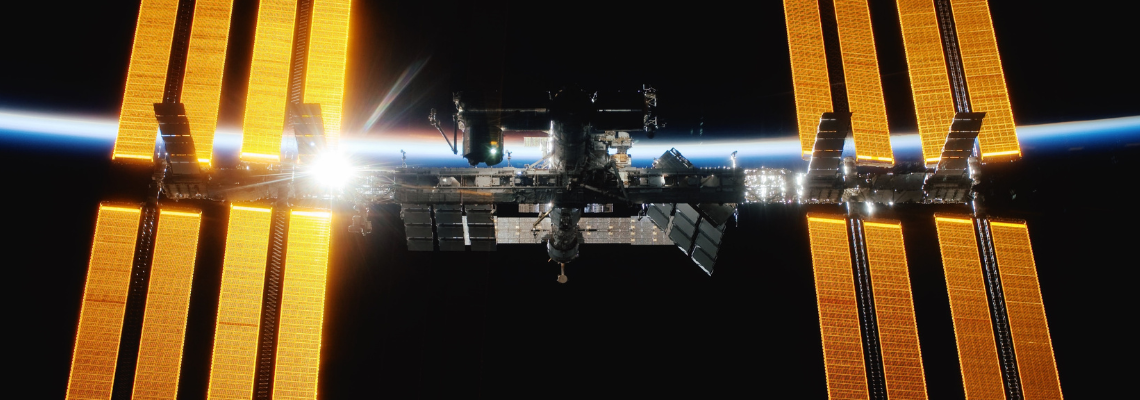How is water recycled in space?
Every drop counts
The European Space Agency (ESA) has released new information about how astronauts reclaim water aboard the International Space Station (ISS).
Sending water into space is incredibly expensive with Space X charging $2,500 for every pound (0.45 Kg) of cargo, on top of a compulsory $1.1 million for 440 pounds (200 Kg).
As a result, astronauts on the ISS receive the occasional water care package of roughly 40 litres.
The station’s water delivery needs were lowered by staggering 1,600 gallons.
The ISS, therefore, employs a highly efficient closed loop to reclaim as much water as physically possible.

Image: ESA
The station’s Water Processing Assembly (WPA) can produce up to 36 gallons of drinkable water every day from the crew’s sweat, breath and urine.
Installed back in 2008, the station’s water delivery needs were lowered by staggering 1,600 gallons.

Image: ESA
The need to close the water loop
In 2017, the ISS's WPA was upgraded with reverse osmosis membranes to, “reduce the resupply mass of the WPA Multi-filtration Bed and improved catalyst for the WPA Catalytic Reactor to reduce the operating temperature and pressure".
More recently, in 2021 the ISS was further upgraded with a Brine Processor Assembly (BPA). This helped to filter out more salt from astronaut’s urine, to help increase reclaimed water that the original filter.
While the WPA has been upgraded over the years, NASA said there is still a long way to go before it can securely transport crews through interplanetary space without needing to send up freshwater.
“To leave low-Earth orbit and enable long-duration exploration far from Earth, we need to close the water loop,” said Caitlin Meyer, deputy project manager for Advanced Exploration Systems Life Support Systems at NASA’s Johnson Space Center in Houston.
Waste to resource
These upgrades for the ISS brought the WPA urine recovery rate to 87 per cent.
“Current urine water recovery systems utilize distillation, which produces a brine. The [BPA] will accept that water-containing effluent and extract the remaining water," said Meyer.
The post-processed urine is mixed with reclaimed condensation and runs through the WPA again giving the WPA an overall water recovery of 93.5 per cent.
This morning's urine is tomorrow morning's coffee!
To safely get to Mars, NASA calculates it needs a reclamation rate of at least 98 per cent.
But while self-sustained travel to Mars might be a few years off, NASA is taking water seriously.
In 2020, biomonitoring start-up Orb won an undisclosed grant from NASA to develop real-time, non-destructive microbial water monitoring for Spacecraft Cabins.
At the time, Lorenzo Falzarano, CEO of Orb said: “There is nowhere more prevalent an example of closed loop water than the space station. This morning's urine is tomorrow morning's coffee!”
Furthermore, despite water recycling systems already in operation on the ISS, Japanese engineers are looking to improve the energy consumption and weight and size of the technologies.
We promise never to send you spam and you can unsubscribe at any time!

.jpg?h=628&iar=0&w=1200)
.jpg?h=628&iar=0&w=1200)
